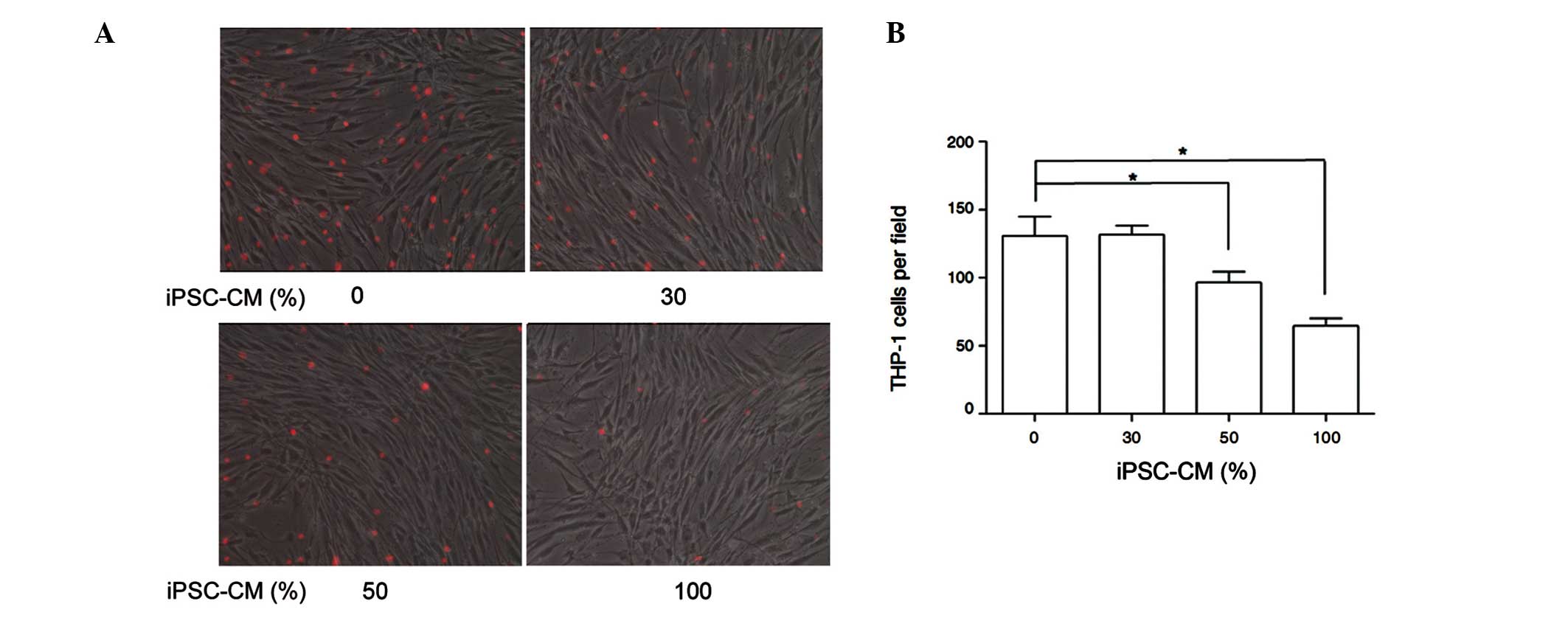|
1
|
Canady J, Arndt S, Karrer S and Bosserhoff
AK: Increased KGF expression promotes fibroblast activation in a
double paracrine manner resulting in cutaneous fibrosis. J Invest
Dermatol. 133:647–657. 2013. View Article : Google Scholar
|
|
2
|
Beanes SR, Dang C, Soo C and Ting K: Skin
repair and scar formation: the central role of TGF-beta. Expert Rev
Mol Med. 5:1–22. 2003. View Article : Google Scholar
|
|
3
|
Clark RA: The Molecular and Cellular
Biology of Wound Repair. 2nd edition. Springer; New York, NY: pp.
22–23. 1996
|
|
4
|
Kovacs EJ: Fibrogenic cytokines: the role
of immune mediators in the development of scar tissue. Immunol
Today. 12:17–23. 1991. View Article : Google Scholar : PubMed/NCBI
|
|
5
|
Takahashi K and Yamanaka S: Induction of
pluripotent stem cells from mouse embryonic and adult fibroblast
cultures by defined factors. Cell. 126:663–676. 2006. View Article : Google Scholar : PubMed/NCBI
|
|
6
|
Neel S and Singla DK: Induced pluripotent
stem (iPS) cells inhibit apoptosis and fibrosis in
streptozotocin-induced diabetic rats. Mol Pharm. 8:2350–2357. 2011.
View Article : Google Scholar : PubMed/NCBI
|
|
7
|
Singla DK, Long X, Glass C, Singla RD and
Yan B: Induced pluripotent stem (iPS) cells repair and regenerate
infarcted myocardium. Mol Pharm. 8:1573–1581. 2011. View Article : Google Scholar : PubMed/NCBI
|
|
8
|
Yan Q, Quan Y, Sun H, et al: A
site-specific genetic modification for induction of pluripotency
and subsequent isolation of derived lung alveolar epithelial type
II cells. Stem Cells. 32:402–413. 2014. View Article : Google Scholar :
|
|
9
|
Chou YH, Pan SY, Yang CH and Lin SL: Stem
cells and kidney regeneration. J Formos Med Assoc. 113:201–209.
2014. View Article : Google Scholar : PubMed/NCBI
|
|
10
|
Colman A and Dreesen O: Induced
pluripotent stem cells and the stability of the differentiated
state. EMBO Rep. 10:714–721. 2009. View Article : Google Scholar : PubMed/NCBI
|
|
11
|
Li LF, Liu YY, Yang CT, et al: Improvement
of ventilator-induced lung injury by IPS cell-derived conditioned
medium via inhibition of PI3K/Akt pathway and IP-10-dependent
paracrine regulation. Biomaterials. 34:78–91. 2013. View Article : Google Scholar
|
|
12
|
Chen SJ, Chang CM, Tsai SK, et al:
Functional improvement of focal cerebral ischemia injury by
subdural transplantation of induced pluripotent stem cells with
fibrin glue. Stem Cells Dev. 19:1757–1767. 2010. View Article : Google Scholar : PubMed/NCBI
|
|
13
|
Xu MJ, Liu XJ, Zhao YL, et al:
Identification and characterization of an anti-fibrotic benzopyran
compound isolated from mangrove-derived Streptomyces xiamenensis.
Mar Drugs. 10:639–654. 2012. View Article : Google Scholar : PubMed/NCBI
|
|
14
|
Zhang ZG, Bothe I, Hirche F, et al:
Interactions of primary fibroblasts and keratinocytes with
extracellular matrix proteins: contribution of alpha2beta1
integrin. J Cell Sci. 119:1886–1895. 2006. View Article : Google Scholar : PubMed/NCBI
|
|
15
|
Mun JH, Kim YM, Kim BS, Kim JH, Kim MB and
Ko HC: Simvastatin inhibits transforming growth factor-β1-induced
expression of type I collagen, CTGF, and α-SMA in keloid
fibroblasts. Wound Repair Regen. 22:125–133. 2014. View Article : Google Scholar : PubMed/NCBI
|
|
16
|
Liu XJ, Xu MJ, Fan ST, et al: Xiamenmycin
attenuates hypertrophic scars by suppressing local inflammation and
the effects of mechanical stress. J Invest Dermatol. 133:1351–1360.
2013. View Article : Google Scholar : PubMed/NCBI
|
|
17
|
Sarrazy V, Billet F, Micallef L, Coulomb B
and Desmoulière A: Mechanisms of pathological scarring: role of
myofibroblasts and current developments. Wound Repair Regen.
19(Suppl 1): s10–s15. 2011. View Article : Google Scholar : PubMed/NCBI
|
|
18
|
Li M, Riddle SR, Frid MG, et al: Emergence
of fibroblasts with a proinflammatory epigenetically altered
phenotype in severe hypoxic pulmonary hypertension. J Immunol.
187:2711–2722. 2011. View Article : Google Scholar : PubMed/NCBI
|
|
19
|
Chung AS and Kao WJ: Fibroblasts regulate
monocyte response to ECM-derived matrix: the effects on monocyte
adhesion and the production of inflammatory, matrix remodeling, and
growth factor proteins. J Biomed Mater Res A. 89:841–853. 2009.
View Article : Google Scholar : PubMed/NCBI
|
|
20
|
Ngo P, Ramalingam P, Phillips JA and
Furuta GT: Collagen gel contraction assay. Methods Mol Biol.
341:103–109. 2006.PubMed/NCBI
|
|
21
|
Wong VW, Paterno J, Sorkin M, et al:
Mechanical force prolongs acute inflammation via T-cell-dependent
pathways during scar formation. FASEB J. 25:4498–4510. 2011.
View Article : Google Scholar : PubMed/NCBI
|
|
22
|
Shaker SA, Ayuob NN and Hajrah NH: Cell
talk: a phenomenon observed in the keloid scar by
immunohistochemical study. Appl Immunohistochem Mol Morphol.
19:153–159. 2011. View Article : Google Scholar
|
|
23
|
Wong VW, Rustad KC, Akaishi S, et al:
Focal adhesion kinase links mechanical force to skin fibrosis via
inflammatory signaling. Nat Med. 18:148–152. 2011. View Article : Google Scholar : PubMed/NCBI
|
|
24
|
van der Veer WM, Bloemen MC, Ulrich MM, et
al: Potential cellular and molecular causes of hypertrophic scar
formation. Burns. 35:15–29. 2009. View Article : Google Scholar
|
|
25
|
Clayton A, Evans RA, Pettit E, Hallett M,
Williams JD and Steadman R: Cellular activation through the
ligation of intercellular adhesion molecule-1. J Cell Sci.
111:443–453. 1998.PubMed/NCBI
|
|
26
|
Agarwal C, Britton ZT, Alaseirlis DA, Li Y
and Wang JH: Healing and normal fibroblasts exhibit differential
proliferation, collagen production, alpha-SMA expression, and
contraction. Ann Biomed Eng. 34:653–659. 2006. View Article : Google Scholar : PubMed/NCBI
|
|
27
|
Darby I, Skalli O and Gabbiani G:
Alpha-smooth muscle actin is transiently expressed by
myofibroblasts during experimental wound healing. Lab Invest.
63:21–29. 1990.PubMed/NCBI
|
|
28
|
Wang J, Chen H, Seth A and McCulloch CA:
Mechanical force regulation of myofibroblast differentiation in
cardiac fibroblasts. Am J Physiol Heart Circ Physiol.
285:H1871–H1881. 2003.PubMed/NCBI
|













